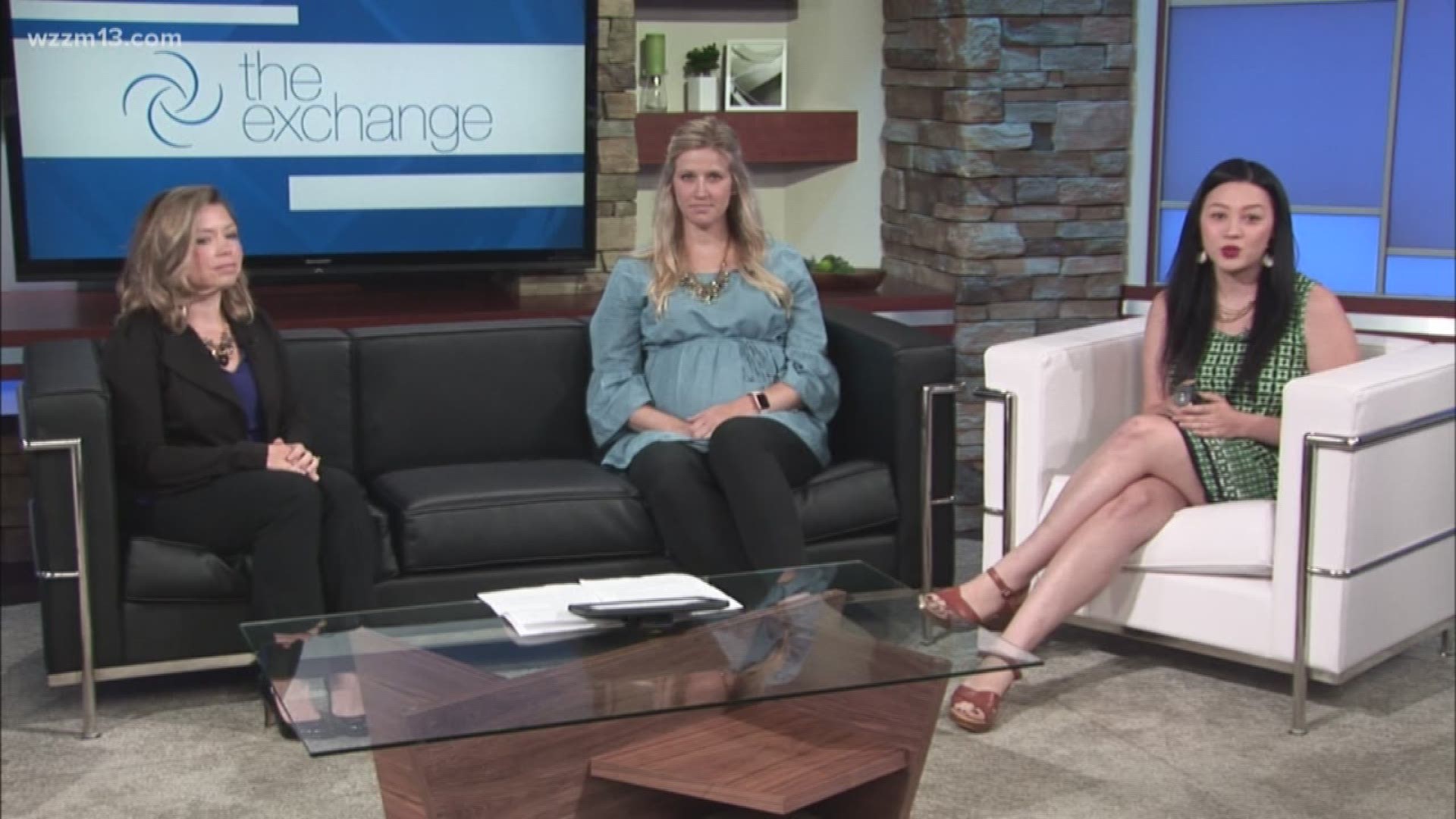If you have spider or varicose veins, then you’re not alone. The U.S. Department of Health and Human Services estimates that 50 to 55 percent of adult women face abnormal leg veins as well as 40 to 45 percent of men.
Many people don’t seek treatment because they’re embarrassed, not sure about the effectiveness of treatment or are worried about the procedure being painful. That’s why Spectrum Health Medical Group Vein Center’s Christina Hopps, a certified physician assistant and Kristen Schwab, a registered nurse who specializes in spider vein treatment, stopped by to teach us more.
Spider and varicose veins are both caused by poor valve function, typically in a person’s legs. To return to the heart, blood in the legs must travel up against gravity. To do this, it flows through one-way valves in the legs that open and close so blood can’t flow backwards. When these valves weaken, blood ends up pooling in the vein causing an increase in pressure and enlarging the vein.
Varicose veins are large, raised, swollen blood vessels that twist and turn. They usually develop in the legs and can be seen through the skin.
Spider veins are a milder form of varicose veins. They are smaller, red, purple, and blue vessels that also twist and turn. Spider veins are easily visible through the skin, as well. They are typically visible on the legs and face.
Aging, pregnancy, obesity, lack of movement and or sun exposure can all be contributing factors of varicose and spider veins. While they are rarely life or death, they can increase serious risks. Generally, abnormal veins can produce burning, aching pain. Your legs can feel heavy and fatigued. They can swell, making the skin itchy and irritated from compromised circulation. Daily activities can become painful, or you may even avoid doing them. This affects quality of life and a healthy activity level. If you have venous disease and don’t treat it, more dangerous risks, such as blood clots, can occur.
Varicose veins may be an early symptom of something else. In many cases, there is a lot more to it than just a cosmetic problem. However, there are ways to avoid and treat these veins.
Tips to reduce the risk for spider/varicose veins
- Wear sunscreen
- Avoid high heels
- Walk/run regularly to strengthen muscles and circulation
- Maintain an healthy weight to allow optimal blood flow
- Elevate legs when resting
- Wear compression stockings
In addition to these precautions, those with spider and varicose veins can try sclerotherapy. In this procedure, spider veins are injected with a solution that scars and closes those veins. In a few weeks, treated veins should fade. Although the same vein may need to be injected more than once, sclerotherapy is effective if done correctly. Sclerotherapy doesn't require anesthesia and can be done in your doctor's office.
For more information on treating spider and varicose veins, visit spectrumhealth.org/veincenter
►Make it easy to keep up to date with more stories like this. Download the 13 ON YOUR SIDE app now.
If you would like more information about advertising with WZZM 13, please contact Jeff Olsen atjolsen@wzzm13.com.

